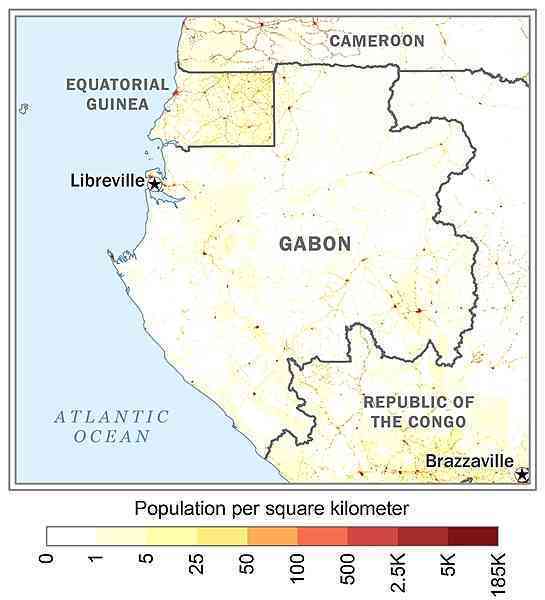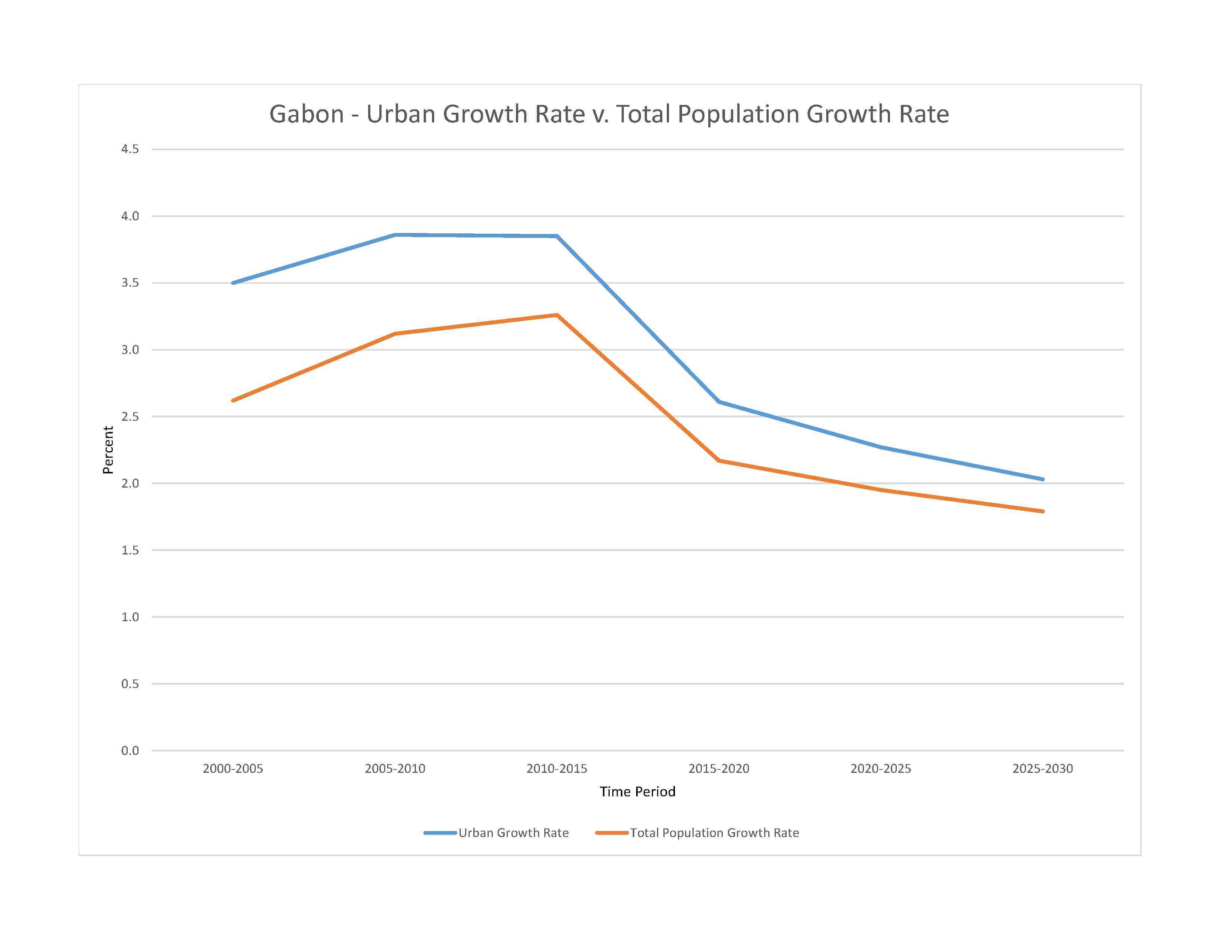
2,397,368 (2023 est.)
noun: Gabonese (singular and plural)
adjective: Gabonese
Fang 23.5%, Shira-Punu'Vii 20.6%, Nzabi-Duma 11.2%, Mbede-Teke 5.6%, Myene 4.4%, Kota-Kele 4.3%, Okande-Tsogho 1.6%, other 12.6%, foreigner 16.2% (2021 est.)
French (official), Fang, Myene, Nzebi, Bapounou/Eschira, Bandjabi
Protestant 46.4% (Revival Church 37%, other Protestant 9.4%), Roman Catholic 29.8%, other Christian 4%, Muslim 10.8%, traditional/animist 1.1%, other 0.9%, none 7% (2019-21 est.)
Gabon’s oil revenues have given it one of the highest per capita income levels in Sub-Saharan Africa, but the wealth is not evenly distributed and poverty is widespread. Unemployment is especially prevalent among the large youth population; more than 60% of the population is under the age of 25 as of 2020. With a fertility rate still averaging more than 3 children per woman, the youth population will continue to grow and further strain the mismatch between Gabon’s supply of jobs and the skills of its labor force.
Gabon has been a magnet to migrants from neighboring countries since the 1960s because of the discovery of oil, as well as the country’s political stability and timber, mineral, and natural gas resources. Nonetheless, income inequality and high unemployment have created slums in Libreville full of migrant workers from Senegal, Nigeria, Cameroon, Benin, Togo, and elsewhere in West Africa. In 2011, Gabon declared an end to refugee status for 9,500 remaining Congolese nationals to whom it had granted asylum during the Republic of the Congo’s civil war between 1997 and 2003. About 5,400 of these refugees received permits to reside in Gabon.
0-14 years: 35.04% (male 424,741/female 415,342)
15-64 years: 60.76% (male 765,729/female 690,931)
65 years and over: 4.2% (2023 est.) (male 50,920/female 49,705)
total dependency ratio: 67.6
youth dependency ratio: 61
elderly dependency ratio: 6.5
potential support ratio: 15.3 (2021 est.)
total: 21.8 years (2023 est.)
male: 22.2 years
female: 21.3 years
2.39% (2023 est.)
25.9 births/1,000 population (2023 est.)
5.6 deaths/1,000 population (2023 est.)
3.6 migrant(s)/1,000 population (2023 est.)
the relatively small population is spread in pockets throughout the country; the largest urban center is the capital of Libreville, located along the Atlantic coast in the northwest as shown in this 
urban population: 91% of total population (2023)
rate of urbanization: 2.27% annual rate of change (2020-25 est.)

870,000 LIBREVILLE (capital) (2023)
at birth: 1.03 male(s)/female
0-14 years: 1.02 male(s)/female
15-64 years: 1.11 male(s)/female
65 years and over: 1.02 male(s)/female
total population: 1.07 male(s)/female (2023 est.)
19.6 years (2012 est.)
note: data represents median age at first birth among women 20-49
227 deaths/100,000 live births (2020 est.)
total: 27.7 deaths/1,000 live births (2023 est.)
male: 30.6 deaths/1,000 live births
female: 24.7 deaths/1,000 live births
total population: 70 years (2023 est.)
male: 68.3 years
female: 71.8 years
3.26 children born/woman (2023 est.)
1.61 (2023 est.)
31.1% (2012)
improved: urban: 97.2% of population
rural: 55.3% of population
total: 93.1% of population
unimproved: urban: 2.8% of population
rural: 44.7% of population
total: 6.9% of population (2020 est.)
3.4% of GDP (2020)
0.65 physicians/1,000 population (2018)
6.3 beds/1,000 population
improved: urban: 81.3% of population
rural: 55.1% of population
total: 78.7% of population
unimproved: urban: 18.7% of population
rural: 44.9% of population
total: 21.3% of population (2020 est.)
degree of risk: very high (2023)
food or waterborne diseases: bacterial diarrhea, hepatitis A, and typhoid fever
vectorborne diseases: malaria, dengue fever, and sexually transmitted diseases: hepatitis B (2024)
water contact diseases: schistosomiasis
animal contact diseases: rabies
15% (2016)
total: 6.47 liters of pure alcohol (2019 est.)
beer: 5.31 liters of pure alcohol (2019 est.)
wine: 0.62 liters of pure alcohol (2019 est.)
spirits: 0.5 liters of pure alcohol (2019 est.)
other alcohols: 0.04 liters of pure alcohol (2019 est.)
6.4% (2019/20)
49.7% (2023 est.)
3.2% of GDP (2020 est.)
definition: age 15 and over can read and write
total population: 85.5%
male: 86.2%
female: 84.7% (2021)
NOTE: The information regarding Gabon on this page is re-published from the 2024 World Fact Book of the United States Central Intelligence Agency and other sources. No claims are made regarding the accuracy of Gabon 2024 information contained here. All suggestions for corrections of any errors about Gabon 2024 should be addressed to the CIA or the source cited on each page.
This page was last modified 04 May 24, Copyright © 2024 ITA all rights reserved.